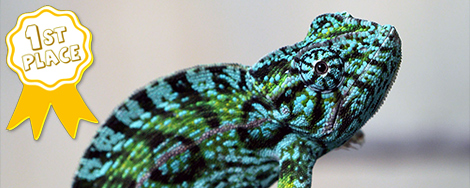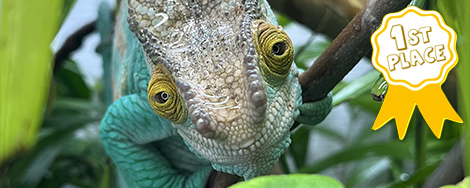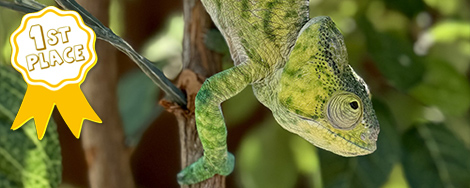Navigation
Install the app
How to install the app on iOS
Follow along with the video below to see how to install our site as a web app on your home screen.
Note: This feature may not be available in some browsers.
More options
Home Page
Recent Discussions
- Replies
- 6
- Views
- 292
- Replies
- 1
- Views
- 137
Did You Know?
Many chameleon species have a bright red, orange or yellow mouth. This conspicuous interior when displayed is used as a defense against predators.
Furcifer labordi (Labord’s Chameleon) has the shortest lifespan of only 4-5 months. It also has the shortest lifespan of any tetrapod!
Chameleon fossils have been found in central Europe and China, indicating they were once much more widespread than they are now.
The word Chamaeleo is derived via Latin from the Greek word khamaileon. It roughly translates to ground lion. Khamai means on the ground and leon means lion.
The horns on a chameleon are made up of ringlike segments of inner bone covered by a hard keratin-like skin.
The word Rhampholeon is taken from the Latinized Greek “rhamphos leon” meaning crawling lion.
Chameleons have laterally compressed bodies. This enables them to warm up quickly by presenting a larger surface area to the sun. It also helps some chameleon species blend in among the similarly shaped leaves in their environment.
Pygmy chameleons (Brookesia, Palleon, Rhampholeon and Rieppeleon sp.) often resemble dry leaves, mosses and branches.
Chameleons have a very poor sense of smell.
Chameleons can project their tongue up to 2.2 times their body length.
We love our sponsors
- Chameleons Only
- Mist King
- Tortoise Supply
- Great Lakes Hornworm
- LLLReptile
- Mulberry Farms
- Chameleon Paradise
- Coastal Silkworms
- Dubia Roaches
- Dragon Strand
- Chamelicious Chameleons
- Full Throttle Feeders
- Gulf Coast Silkworms
- Chromatic Chameleons
- Sticky Tongue Farms
- The Critter Depot
- Mantis Place
- Rebecca Wang Art
- iPardalis
- Rainbow Mealworms
- FramsChams
- Light Your Reptiles
- Neptune the Chameleon
- Tamura Designs
- Ready's Rainforest
Featured Blog Entries
-
The Philosophy of Gutloading PART 1.
- Kaizen
- Views: 49K
- Reaction score: 15
- Comments: 9
- General
The Philosophy of Gutloading Acknowledgements I would like to thank Anthony Herrel and Walter Tapondjou for their helpful advice on where to look... -
Basic info on Misting and fogging...
- Decadancin
- Views: 82K
- Reaction score: 10
- Comments: 24
- General
Of course, all animals require water to survive, and it isn't as simple as placing a bowl in the bottom and calling it a day. In fact, with most... -
Intro to Bio-Activity
- cyberlocc
- Views: 60K
- Reaction score: 35
- Comments: 23
- General
Introduction to Bio-Activity: As of recent times, a lot of folks have been asking questions, and for guides on Bio-active Enclosures. How to set...
Members Online Now
Total: 817 (members: 4, guests: 813)
Trending Topics
-
-
Help me please!! My veiled chameleon hasn’t eaten and her eyes have been closed for a week!!
- Started by Ley.Cap07
- Replies: 28
-
-
-





